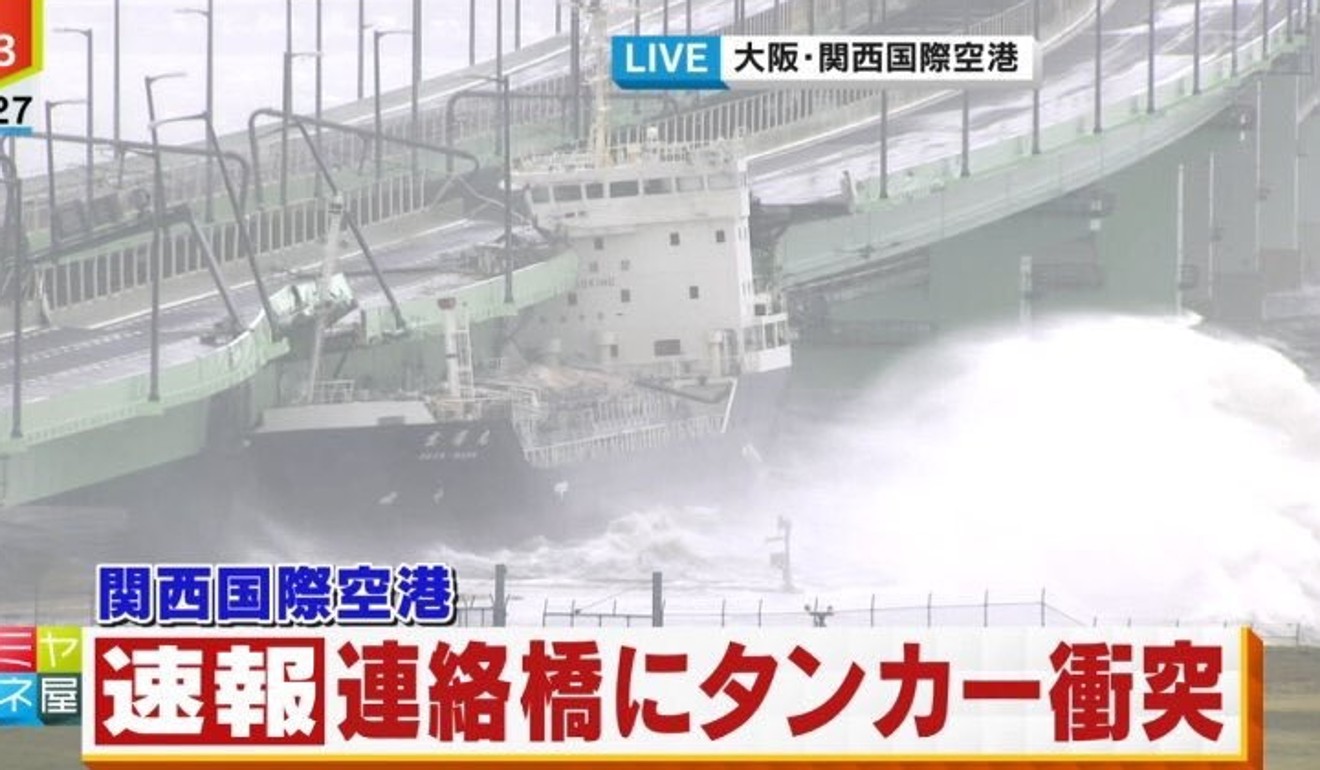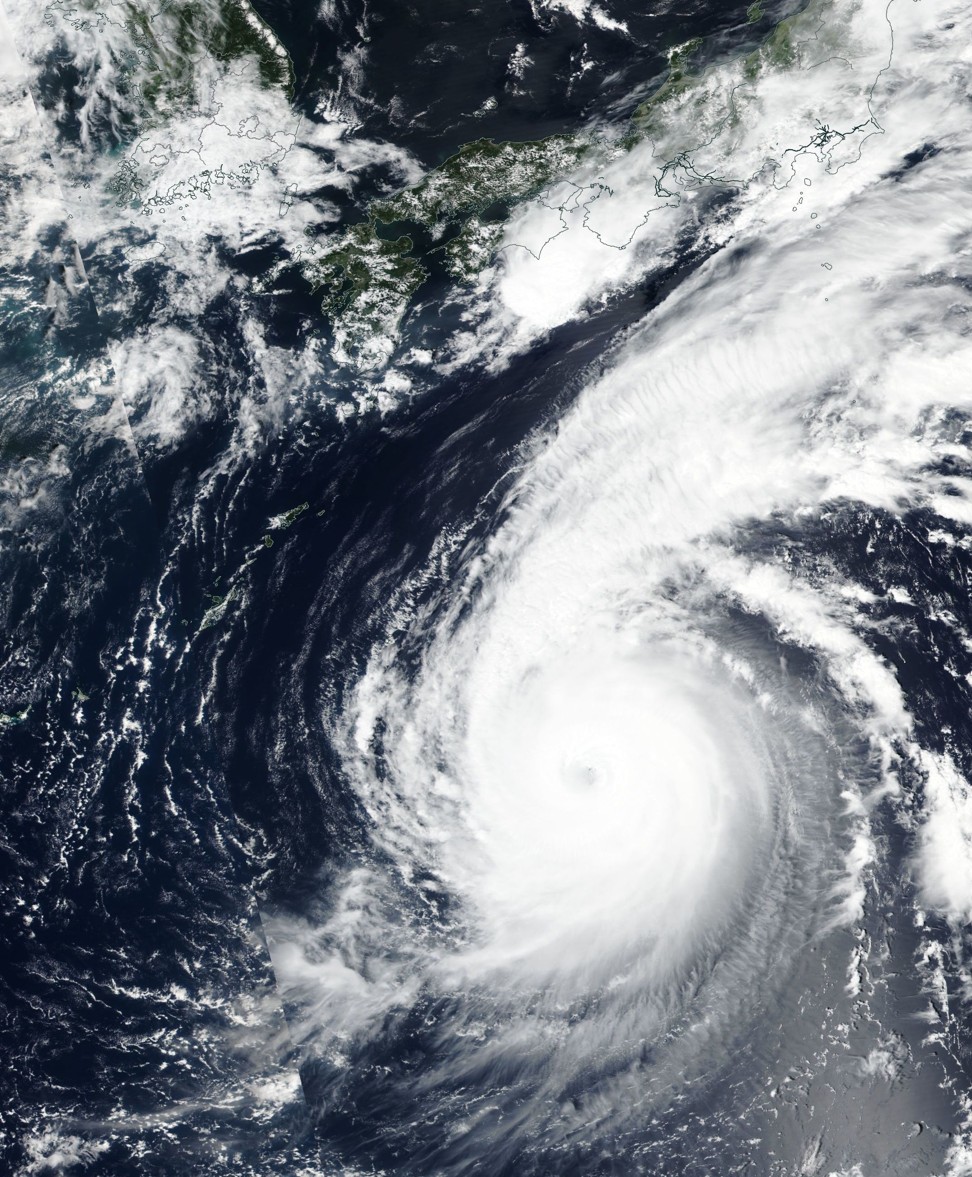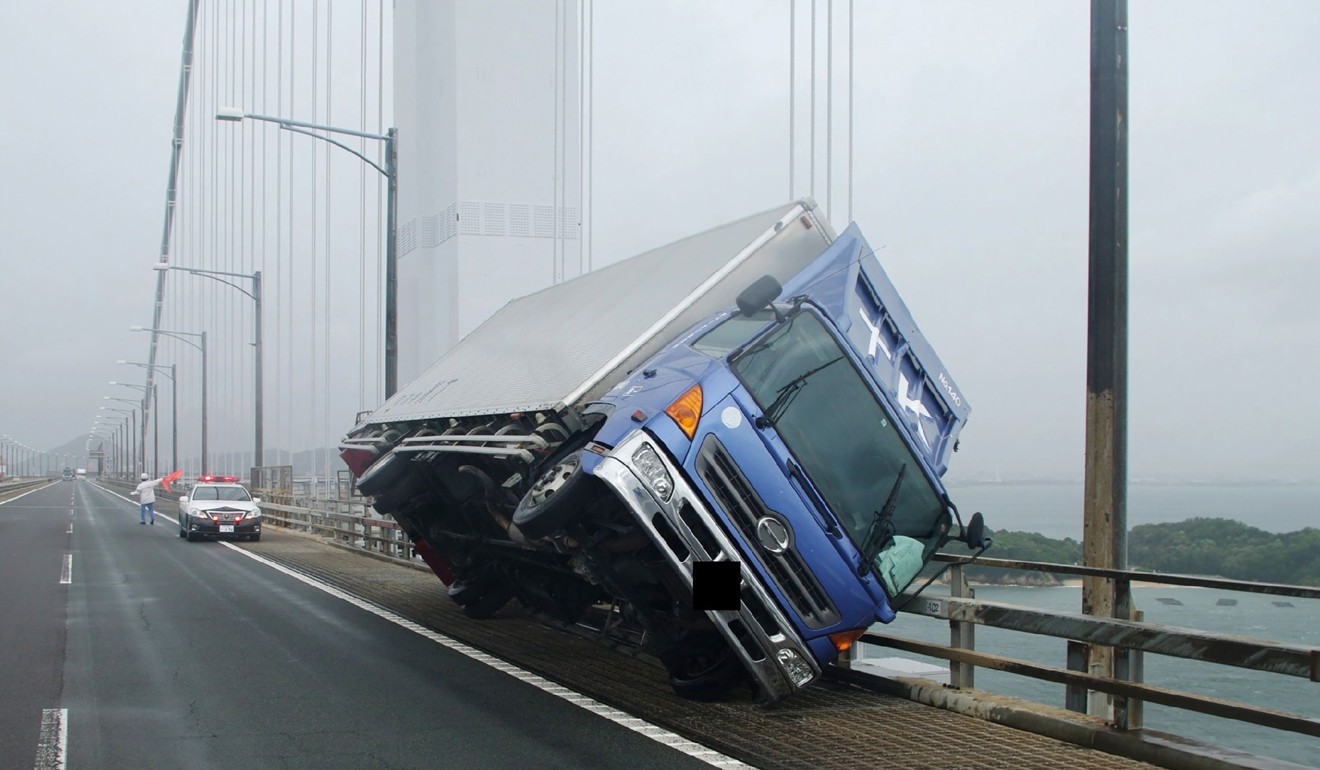Typhoon Jebi leaves a trail of death and destruction in Japan
At least seven dead and hundreds injured as strongest typhoon to hit Japan in 25 years wreaks havoc, causes transport chaos and shuts down Kansai Airport

The strongest typhoon to hit Japan in 25 years tore across the country’s southwest on Tuesday, leaving at least seven people dead and hundreds injured, while wreaking havoc on transport.
Dozens of Hongkongers were among those left stranded after strong winds and high waves unleashed by Typhoon Jebi shut down Kansai International Airport – Japan’s third busiest – and caused a ship to smash into a bridge.
The collision severed road and rail links between the airport and the main island of Honshu, and left 3,000 people stranded in the airport.
Tokyo issued evacuation advisories for more than 1 million people as Jebi, named after the Korean word for “swallow”, brought death and destruction to the country, which has already been battered by killer rains, floods, landslides and a record-breaking heatwave this summer.
“I urge the Japanese people to take action to protect your lives, including preparing and evacuating early,” Prime Minister Shinzo Abe said.
Packing winds of up to 216km/h (135mph), Jebi was the most powerful storm since 1993, the weather agency said.
It made landfall around noon, slamming into the west of the country, before crossing the mainland. By nightfall it was heading out to sea from Ishikawa in central Japan.
Tides in some areas were the highest since a typhoon in 1961, local media said, with floods inundating the runways at Kansai International Airport in Osaka and causing hundreds of flights to be cancelled.
At least 70 Hongkongers in several tour groups were stuck in Osaka, the Travel Industry Council of Hong Kong (TIC) said.
“According to the information we collected from the major Japan tour operators, there are at least seven tour groups, about 170 passengers, in Osaka now.
“Among them, about 70 passengers were scheduled to return to Hong Kong [on Tuesday] but are stranded,” said TIC executive director Alice Chan Cheung Lok-yee.
“The 100 are scheduled to return in the next few days. The total number affected is expected to increase.”

The Immigration Department’s hotline for Hongkongers in trouble abroad received calls from people asking for information on how to reach Kansai Airport, but no one reported being in danger.
Hong Kong’s flagship carrier, Cathay Pacific Airways, said Kansai Airport had been closed “until further notice”. The airline’s airport services delivery general manager, Patrick Yu, said travellers could rebook, fly elsewhere or get a refund.
Cathay said all 19 Tuesday and Wednesday flights to and from Osaka had been cancelled. Hong Kong Express followed suit, scrapping 17 flights.
Flights to major cities in Japan from Shanghai Pudong and Beijing Capital airports were mostly cancelled or delayed on Tuesday, according to aviation website variflight.com.

Osaka is a hugely popular destination for mainland Chinese and Hong Kong tourists. Hong Kong and Shanghai each have around 19 daily flights to Kansai.
The Chinese consulate general in Osaka issued an alert on Monday, warning its nationals in Japan to alter their travel plans and keep away from dangerous areas.
More than 600 domestic flights had been cancelled, according to Japanese broadcaster NHK.
Ferry services were suspended, as was the high-speed bullet train route between Osaka and Hiroshima.

The storm paralysed Osaka, forcing companies to close factories, while power was cut to more than 800,000 homes and offices. In total, some 2.3 million households suffered blackouts due to the storm.
A man working in a warehouse in Shiga Prefecture died after the building collapsed on him, while another man fell to his death from the second floor of a house in Osaka, apparently caught by a gust of wind, police said.
Several people were injured at Kyoto Station when part of the glass ceiling collapsed.
The storm made landfall on Shikoku, the smallest main island, at around noon. It raked across the western part of Honshu, near the city of Kobe, several hours later, heading north rapidly.

Television footage showed waves pounding the coastline, sheet metal tumbling across a car park and a truck turned on its side.
People in Kobe reported on Twitter that the wind was shaking their apartment buildings and ripping branches off trees.
While Tokyo would escape the worst of the storm, authorities warned of very strong winds and heavy rain in the capital as well.
Additional reporting by Reuters, Associated Press, Agence France-Presse, Bloomberg and Kyodo